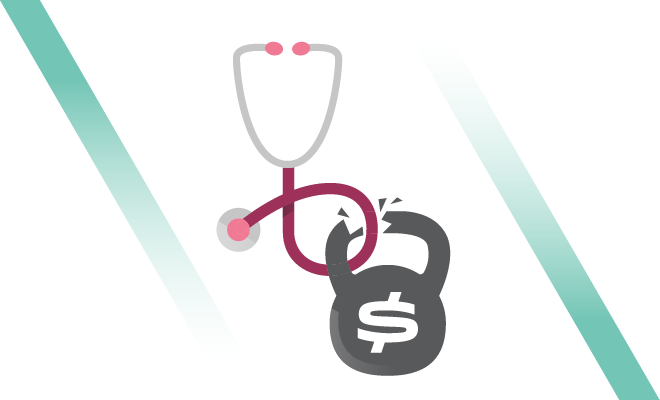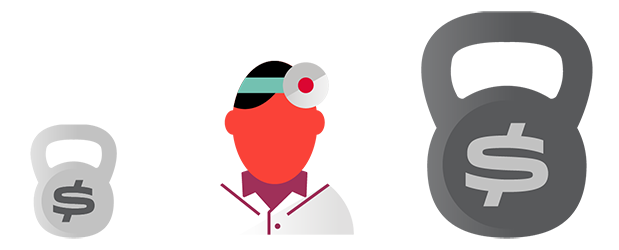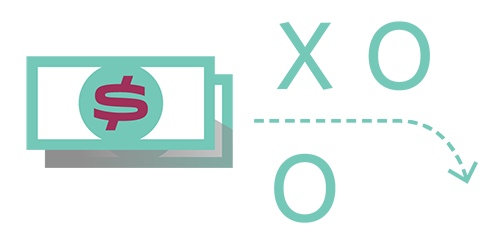How to pay off medical school debt: A comprehensive guide

Medical school student debt is a burden that follows many physicians well into their career. Fortunately, there are sound financial strategies that can help you pay your debt off more quickly and reduce the overall amount you'll end up paying. This guide will help you:
Understand your options
Learn how some physicians are paying off debt
Know when and where to get help
How does your debt compare?

Most physicians finish residency with more than $200,000 in medical school student loans, and it's not uncommon for new doctors to carry student loan debt of $250,000 or more.
A 2024 medical school debt survey conducted by CHG Healthcare produced similar findings. Of the physicians surveyed who were still carrying medical school debt, 11% said they still owed more than $200,000 but less than $250,000, and 43% had more than $250,000 in medical school debt remaining.
Most (59%) expect to be paying off their loans for at least six more years, and 30% believe it will be more than ten years before their medical school debt is eliminated. However, the survey's findings also shed a ray of hope for those physicians who are aggressive in their debt-repayment strategies. Of the respondents who had already paid off their medical school loans (31%), a majority were able to do so relatively quickly. About half (44%) were medical school debt-free in five years or less, while 13% had paid off their loans in two years or less. Understanding ways to pay off medical school debt can help you make this your reality.
Medical school debt repayment options and strategies

Every physician's circumstances are unique, and there are many different ways to eliminate medical school debt. Which strategy is best for you will depend on factors such as:
Your specialty
How much you earn
Where you want to work
Your desired lifestyle
Your current loan situation
Here's a summary of the most common repayment options, along with insights on when and why you should consider them.
See how they did it: How 5 doctors paid off their med school debt
Public Service Loan Forgiveness
Public Service Loan Forgiveness (PSLF) is a good option if you plan to stay in the nonprofit world working for a hospital or university once you become an attending physician. This federal program forgives the remaining loan balance tax-free after 10 years of service of working full time for a qualified employer. PSLF is not an option if you plan to work for a private practice or a for-profit group.
The total savings can be significant, especially if you have a higher student loan balance. However, for physicians with lower student debt, it may not be the best option.
In addition to working full time for a qualified employer, you must have PSLF-qualified direct loans and be enrolled in an income-driven repayment program that will determine your qualified payments.
PSLF aside, there are many states with medical student loan forgiveness programs with some offering loan repayment of up to $20,000 or more annually. Don’t forget to explore this option if you plan on staying in one state.
Does PSLF makes sense for me if I deferred my student loans during residency?
If you’re a physician who fits this description, you have two options: refinance and work hard to pay them off fast or go for PSLF. The right choice depends on a few factors:
Do you have a moderate or worse debt-to-income ratio (DTI>1)?
Run the numbers carefully—in some cases loan forgiveness may not be possible or not worth the hassle. In other cases, PSLF is likely a good move. A financial advisor or free online resources can help you determine what’s possible for you.
Are you working for a PSLF qualifying employer?
Qualifying providers include government employers and many nonprofit organizations. If you don’t already work for one of these organizations and want to explore the option, understand that you must work full time and make 120 qualifying monthly payments during your employment under a qualifying repayment plan.
Do you have Direct Federal Student Loans?
Consolidating your loans to a direct loan will automatically convert all federal loans to a qualified loan type that will work for all forgiveness and income-driven programs, including PSLF. This also allows you to choose the loan servicer. There are dozens of loan servicers you can work with, but you will need to report your qualified payments to FedLoan, which is the loan servicer that actually administers PSLF. Working with them directly, you can cut out the middleman.
Caution: If you’re already a few years into your career and have been making qualified payments, you may want to think before you consolidate. By consolidating you may cancel your qualified payments and have to start from scratch.
Income-driven plans
Whether or not you qualify for Public Service Loan Forgiveness, you can still enroll in an income-driven plan. These plans will forgive the remaining balance after 20 – 30 years, depending on the plan, and your payment size depends on your debt-to-income ratio.
Unlike the PSLF program, income-driven plans do not forgive your remaining loan balance tax-free at the end of the program, so make sure to reserve a portion of your income to pay taxes at the end of the program.
Income-driven plans are changing due to federal legislation, so we recommend speaking with a financial advisor to determine which repayment strategy is best for your situation. More information can also be found at The White Coat Investor.
Private loan refinancing
If Public Service Loan Forgiveness (PSLF) isn't the right option for you, consider private loan refinancing. Private loan refinancing involves changing federal loans into a bank loan. Bank loans typically come with lower rates and improved repayment terms. Private loans can be refinanced multiple times during the loan's lifetime, allowing you to take advantage of lower rates whenever they arise.
That said, it's common for physicians to make irreversible mistakes during the transition stage when they are still planning out their career path. Once you refinance federal student loans with a private lender, you close the door on loan forgiveness options. Make sure you get some advice first before you refinance.
Earn more to pay off your loans faster: How to negotiate a better contract
Keep debt payments low and invest the difference
Using an income-driven plan is a way to keep your payments low so you can have increased cash flow for other priorities. An income-driven plan may offer lower payment requirements, which frees up money that can be used toward other financial objectives, such as paying off other debt, contributing to retirement savings, or investing.
Before employing this strategy, you should determine:
If the average return on your investment is higher than your interest rate
What taxes you might face from your investment
What your personal money goals are
For those who’d rather relieve the burden of their debt sooner than see a growing investment account, this isn’t the right approach.
Work locum tenens or per diem and make higher loan payments
A strategy employed by many early career physicians is to work locum tenens or per diem shifts and apply the extra earnings toward paying off student loans more quickly.
According to data from a CHG Healthcare study, on average across all specialties, physicians who work locum tenens full time make $32.45 per hour more than permanent-only doctors. Given that data and the many other benefits of working locum tenens, it’s no surprise then that 56% of those surveyed by CHG Healthcare worked locums within 10 years of entering the field.
Whether you work locums full time or on the side, it can help boost your income to pay down student loans faster. This is true even if you’re not interested in travel—38% of physicians who’ve done locums report working locums assignments close to home.
When & where to get help
Help is available for physicians who want guidance in determining which debt repayment strategy to pursue, and while it's best to get advice early in the process, there are many points in a physician’s career where a professional can help. Consider consulting with a professional:
In the last couple months of medical school
At least once during residency
Once you’re offered a full attending position
Anytime you make a major career change
Regularly to ensure you’re on track with your chosen plan
For additional help in paying off your medical school debt, check out these helpful resources:
The White Coat Investor: Ultimate Guide to Student Loan Debt Management for Doctors
The Student Doctor Network: A Beginner's Guide to Paying for Medical School
Federal Student Aid: Public Service Loan Forgiveness Program
Association of American Medical Colleges: Financial Aid Resources
Recommended articles
Thank you,
We appreciate you contacting us. A consultant will be reaching out to you shortly to discuss this job opportunity. You can also get in touch with us directly by calling 954.618.5296.
